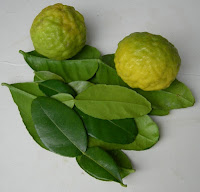Recently I have visited one of the Chinese restaurant Sanghai Chef located in Madhapur, Hyderabad. Although being a traditional Chinese restaurant they served Thai food. I tasted Thai curry for the first time in my life and Hooked to its taste.
And so I decided to discover Thai cuisine.
Before cooking any continental food, it is important to have a well-stocked pantry of general, non-perishable items.
Putting together a basic Thai pantry requires a short list and perhaps a trip to Asian grocery shop, although many of these ingredients are carried in large, well stocked supermarkets.
Basil: Holy basil, which has pointed leaves with serrated edges and purple stems, is the variety used in Thai cooking. It has a more pungent flavor than common basil. If you cannot find it, use common basil instead.
Chiles: The three typs of chiles that are typically used in Thai cooking are banana chiles (miled and pale green-yellow); dried red chiles (dark red and very hot; remove seeds before using); and bird chiles (tiny fiery-hot multicolored fresh chiles).
Coconut Milk: This liquid, which is squeezed out of freshly grated coconut, comes in 13-oz. cans (there is even a low-fat version) and is used right out of the can in many Thai curries. Coconut milk will separate as it sits on the shelf, so shake well before using. Save any leftover coconut milk in an airtight container and refrigerate up to three days.
Curry Paste: These pounded blends of chiles, spices and seasonings come in red, green and yellow varieties. Be sure to buy a brand labeled “product of Thailand”. Curry pastes keep indefinitely unopened; once opened, they can be refrigerated up to six months.
Galangal: This rhizome looks similar to ginger, but has translucent skin and a pinkish tinge. It’s available fresh or dried in Asian markets.
Ginger: This knobby root is always used in its fresh form in Thai cooking.
Jasmine Rice: Buy this long-grain aromatic rice in a package marked “Product of Thailand” for the tastiest rice.
Lemongrass: These long, scallion-like stalks resemble dry sticks and are extremely aromatic when sliced or crushed. To use, peel the toughest outer layer and bruise the stalk with the back of a knife, or peel all outer layers to expose the tender inner core and mince. Store fresh lemongrass in the refrigerator, loosely wrapped for up to two weeks; freeze for longer storage.
Kaffir Lime Leaves: Sold fresh or dried, these leaves are wonderfully aromatic and are used similar to a bay leaf for flavoring dishes. Store fresh leaves in the refrigerator up to one week. Dried leaves are a useful substitute; soak them in warm water 20 minutes before using.
Rice Noodles: These noodles are available fresh and dried, but the fresh form, which comes in wide strips, is preferable. Dried rice noodles (also called rice sticks) need to be soaked in warm water for about 20 minutes, until they lose their translucency and become opaque white.
Sticky Rice: Also called sweet rice or glutinous rice, it is long-grained and has a slightly sweet taste.

















